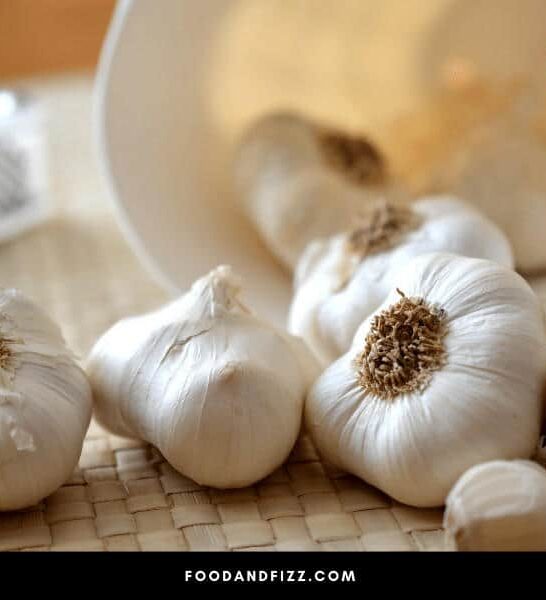When garlic comes with dark spots, the question is: To eat or not to eat? Not all brown spots are signs of garlic that have gone off and not all brown spots are necessarily bad.
Brown Spots on Garlic
Brown spots on garlic are usually a sign of bruising, mold, or a bulb mite infestation. Bruises are a site where bacteria can enter the plant. Bulb mites can also enter a garlic clove through a bruise. When they feed on the bulb, raised brown spots may appear. It is safe to eat garlic that has been eaten by mites, but there may also be bacteria in the garlic, which can cause illness. Brown spots are also one of the early signs of mold in garlic.
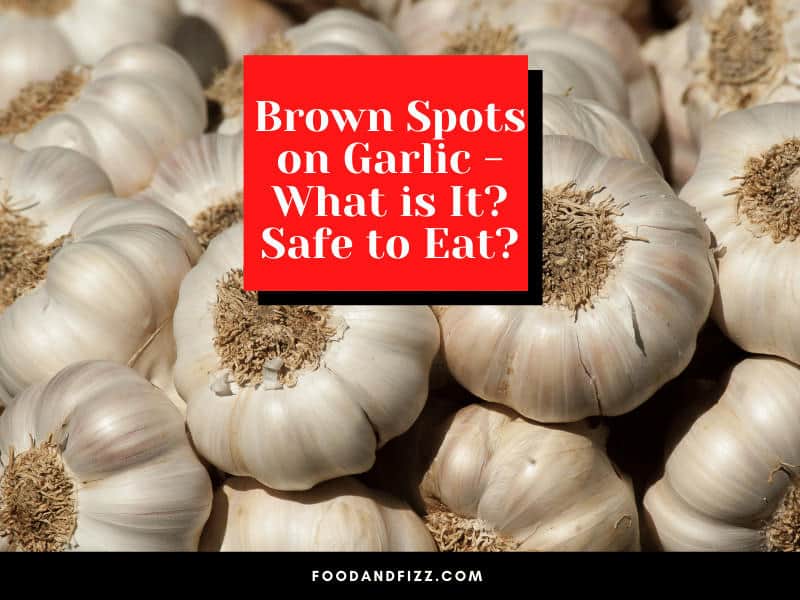
1. Dark Spots on Garlic
If there is discoloration on the garlic, look carefully at the marks and see how far into the garlic it goes.
Some spots are only on the skin, while some have penetrated into the cloves themselves. In extreme cases, the garlic may not just have dark spots but may be completely dark in parts.
Garlic is segmented into different cloves, so it does happen that dark spots beginning on one side of the head may not have traveled to the other side yet. The dark spots are usually caused by an infection of the garlic, but they may also be signs of bruising.
2. Bruises
Dark spots on garlic are not always a sign of an infection. If the garlic heads have been handled roughly or dropped, they can develop bruises, which look like brown spots.
In this case, it‘s perfectly safe to eat the garlic, although you may want to cut the bruised bits off of the cloves. You can throw away cloves that are badly bruised.
Garlic heads can become bruised before harvest if they struggle to grow in hard soil, or against a buried rock. Again, these bruises will not harm you. However, bacteria in the soil can enter the plant via the soft or broken skin of the bruise.
Rather than risk getting sick, remove the cloves that are bruised and throw them away. Of course, if the whole garlic head is badly bruised, then throwing it away is the safest option.
3. Mold
We think of mold being something that develops in damp and dark places, but black mold can affect garlic that is grown in hot, dry conditions. It’s caused by a bacteria that lives in decaying matter in soil, or it can be carried on the air in the form of spores.
You will recognize mold on the garlic by black or brown spots. If it is advanced, there may be a lot of spots, or even a solid black or brown section, around the head of the cloves.
You can also test for it by pressing down on the part of the garlic that is black or brown. If that part breaks, it is most likely mold.
You could use garlic that has spots of mold because it is not toxic. However, eating mold could make you sick. It’s best to remove the parts of the garlic that are affected and use the rest of the cloves.
Mold can be hidden, so if you are concerned about eating it, rather get rid of the garlic. You may be able to remove any healthy cloves and eat them. Either use these cloves or throw the whole head of garlic away, as mold can continue to grow.
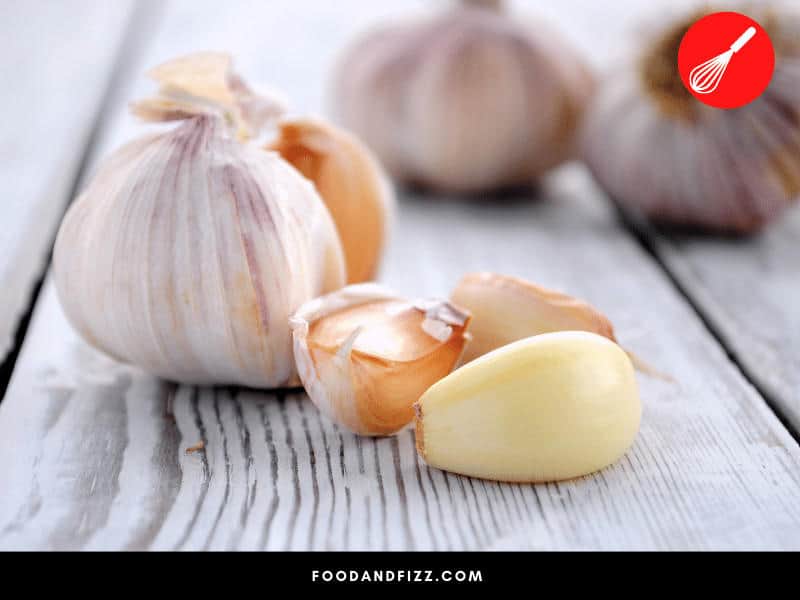
4. Bulb Mites
One of the most common pests that attack garlic plants is the bulb mite. They feed exclusively on bulbs and, of course, garlic is one of their favorites.
The female mites lay eggs on the bulbs. A break in the skin of the bulb, or a section that is soft or even beginning to decay is an attractive site for the eggs. This means that the mites may be attracted to bruised cloves, or to a part of a clove where there is mold.
On the other hand, if the garlic is still healthy, the hatched mites can eat their way through the outer layer of the garlic cloves and create a site where bacteria can enter. This promotes the growth of infection and the decay of the affected cloves.
The bulb mites are so microscopic that they can get themselves between the layers of a garlic clove. As they feed, brown spots can appear on the outside of the clove. The brown spots created by mites tend to be raised.
If your garlic has these raised brown spots, then it is safer to throw it away. At least, throw away any affected cloves.
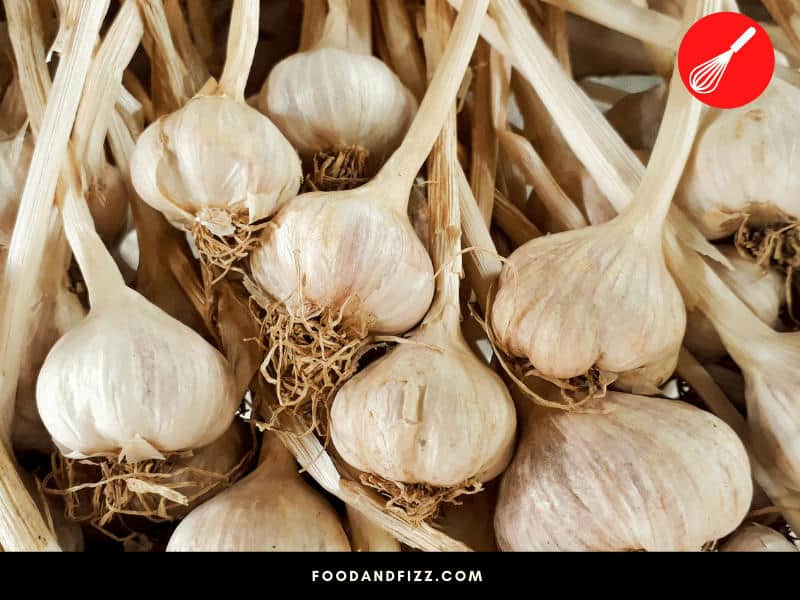
What to Do when Garlic has Dark Spots
Garlic with dark spots is not necessarily beyond use. Even if you remove the affected areas, though, there are some tricks you can use to double-check if your instinct about the plant’s fitness is correct.
Feel your way
Garlic that has some discoloration has not necessarily gone ‘off’ yet, so you will need to be able to check.
A simple trick is to feel the garlic. It should be firm when squeezed. If you notice any parts that are soft and squishy, then at least those cloves are off and should be discarded.

Leave it to the nose
Garlic has a strong smell, but it also has a very distinctive aroma. If you are concerned about garlic that has dark spots, then take a deep breath and smell it. Your nose and your stomach will tell you if the garlic can be used, or if it needs to be thrown out.
When in doubt, choose caution
The three most common causes of dark spots on garlic, mold, bruises and bulb mites, mostly work hand-in-hand.
At least, they can aid each other in causing the decay of the garlic head: bruises are spots where bulb mites can enter and then begin to destroy the plant; mold can cause decay in a clove of garlic, which then offers a spot for bacteria or mites to enter the plant.
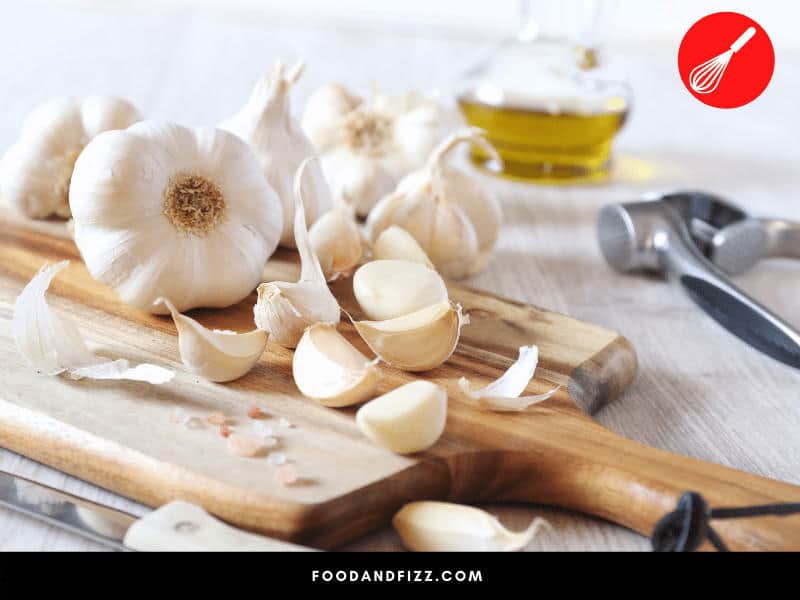
Conclusion to Brown Spots on Garlic -What is it? Safe to Eat?
The surest option, when faced with garlic that has brown or black spots on it, is to assume the whole head of garlic is affected and to discard it. Otherwise, you may inadvertently find yourself eating mould, or even bulb mites.
Frequently Asked Questions on Brown Spots on Garlic – What is it? Safe to Eat?
Will I get sick if I eat mold on garlic by accident?
Depending on how much mold you actually eat, it can make you sick. Mould is caused by a fungus that can affect you. Avoid eating mold where possible. Rather throw the garlic away than risk getting sick.
What will happen if I eat garlic that’s been eaten by mites?
Bulb mites can’t harm you if you eat them in the garlic. However, garlic that has been affected by mites can attract bacteria, because the skin of the cloves has been broken. The bacteria are more likely to harm you than the mites.

